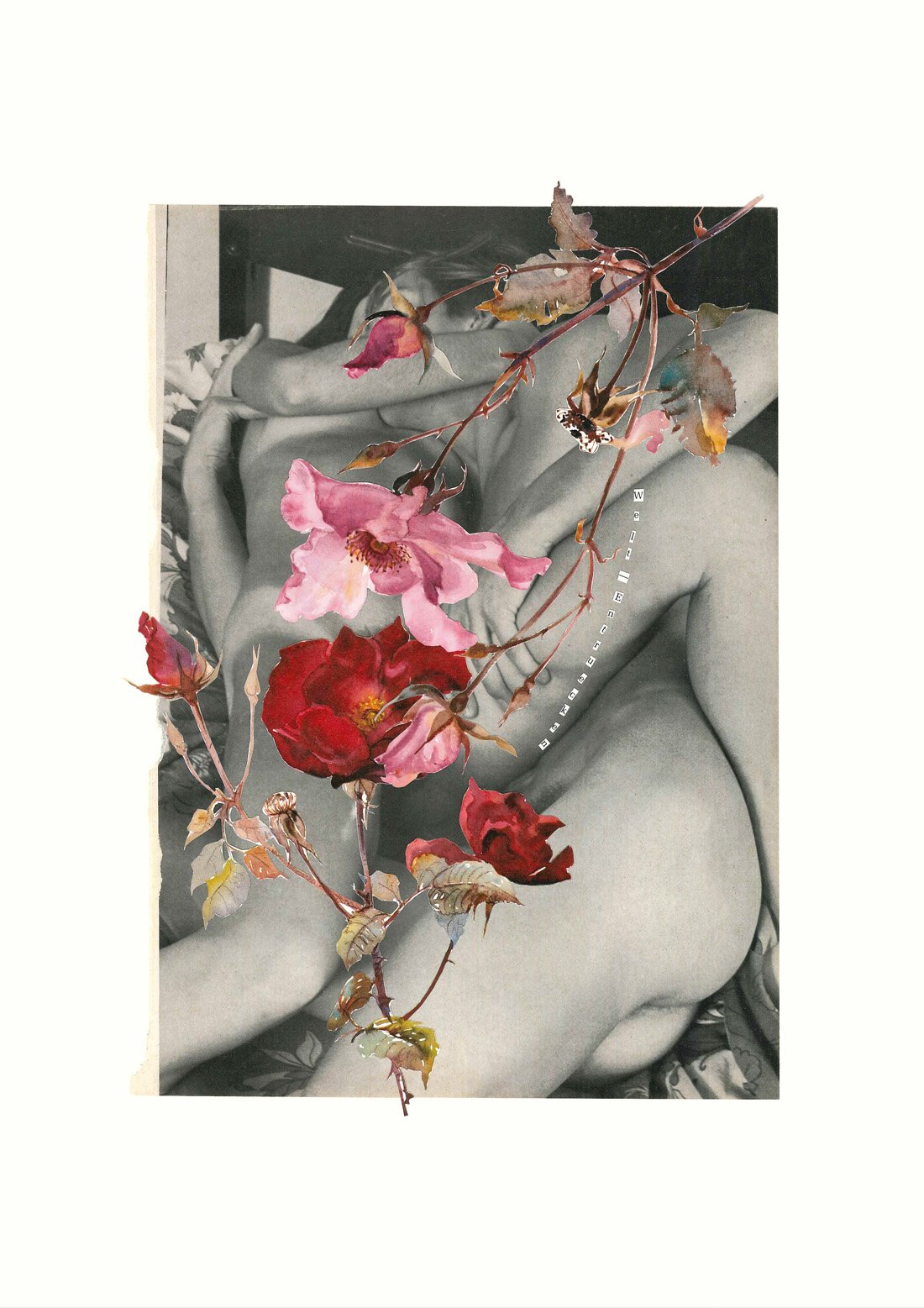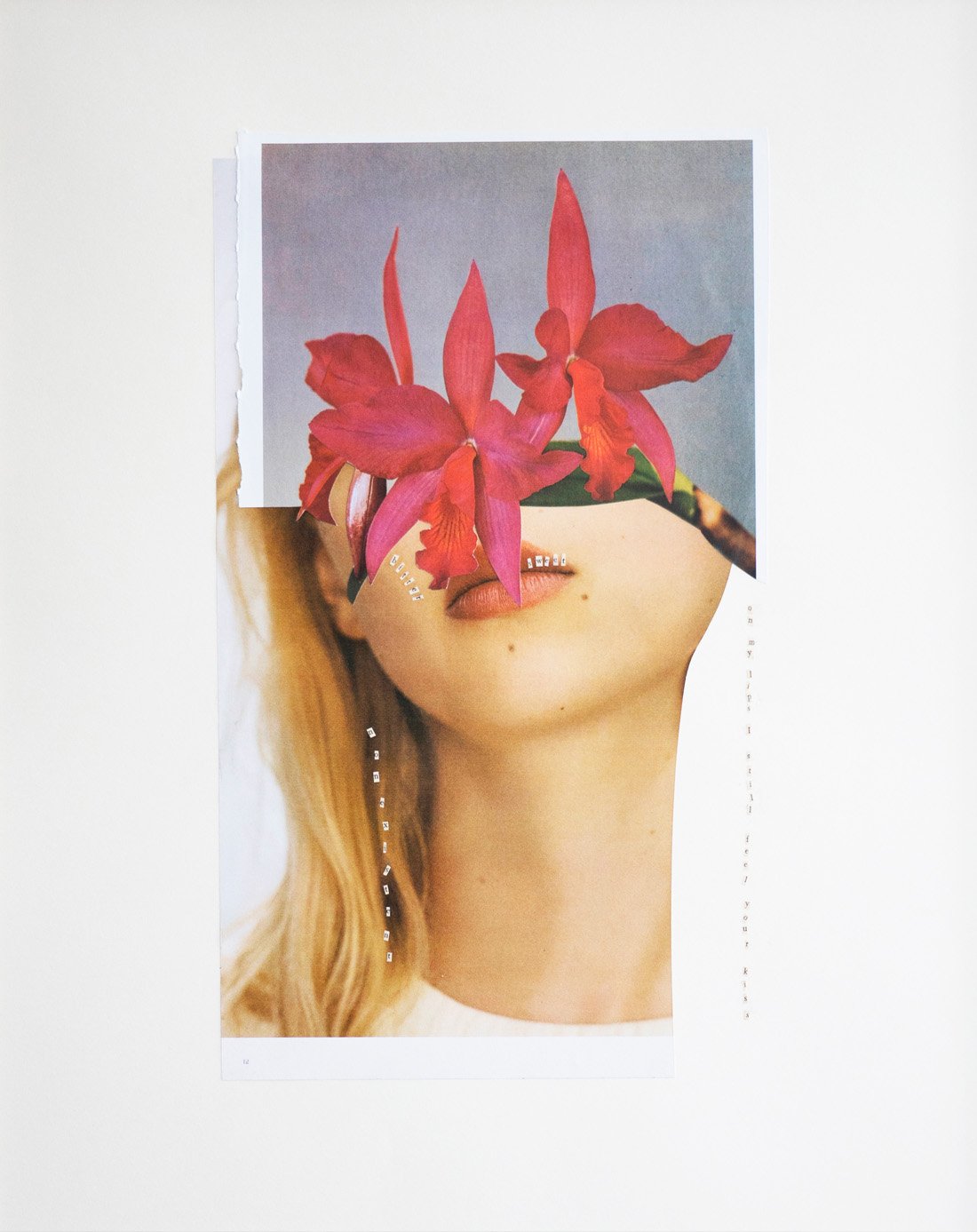
“Order becomes chaos for a while so that I can create a new order with a new meaning.”
Meet collage artist Lara Minerva and learn more about the origin of her mesmerizing pieces.
THE ARCHIVE: Do you remember how old you were when you created your very first collage? What did it look like?
LARA: I remember making my first collages while being on a vacation in Greece. I was still a teenager and the collages were made from fashion and travel magazines. They were already very surrealistic and full of symbols. One showed a woman in the desert and next to her was a goldfish in an ice-cube and in the sky you could see a plane passing by. I really enjoyed collaging but tried other techniques later, mainly photography and drawing. In 2015, when I lived in New York for 3 months, I rediscovered my passion for collage through a very inspiring Ukrainian woman I met and became friends with. Collage has been my main medium ever since.
TA: Having studied psychology, do you often get inspired by it when creating your art pieces? What inspires you to start a new project?
L: No, not directly, but I am just very interested in the human mind, in emotions and conflicts that people are facing. This interest is why I studied psychology and this interest manifests itself in the subjects of my art. My approach when creating new artwork is rather intuitive. I usually listen to myself and to what moves me at that moment. My knowledge about psychology then helps me to analyze and understand the results.
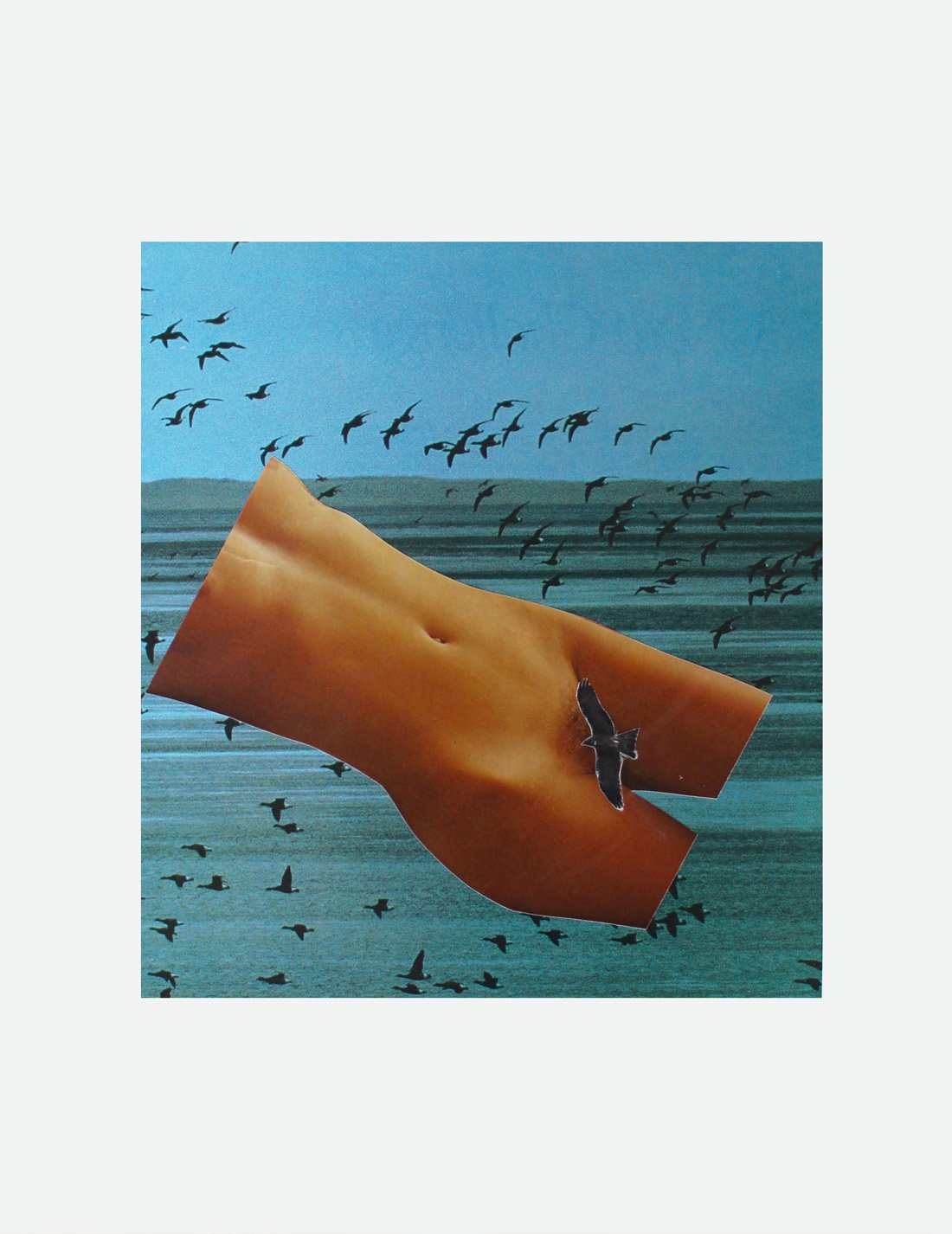
TA: What do you want the viewer to experience when seeing your creations?
L: I hope that the viewer can indulge in the artwork and experience a feeling, maybe the one that I felt while making it or another feeling that he or she projects into the artwork. I hope that concentrating on this one feeling can be a cathartic experience where you feel a relief afterwards, or that it can start a process that eventually will lead to the relief.
TA: You grew up in a German-Greek culture, do you think this also reflects on your work somehow? If so, how would you define this influence – do you see a German part and Greek part for instance?
L: This question is difficult to answer without using stereotypes of what is typical Greek and what is typical German. I definitely have a weakness for tragedy, so this and also my very sensitive and passionate side could be more Greek influence and my analytic side and the way I like to be very precise and minimal in my compositions could be a German influence. But I guess with this answer I am just taking my characteristics and sorting them into the two stereotypes.
TA: Could you walk us through your creative process? How do you choose the images? Do you take photos yourself or do you only use already existing images?
L: Usually I use existing images. That is most exciting for me, because I enjoy taking something with a certain meaning and by extracting just a little piece of it or by combining it with another image creating a totally new meaning. I use photos from old books or magazines or sometimes I collaborate with photographers who send me prints of their photos. I never search the internet to print out a photo that I need. I really enjoy taking photos though and plan to use my own photos for some future projects to create more personal works.
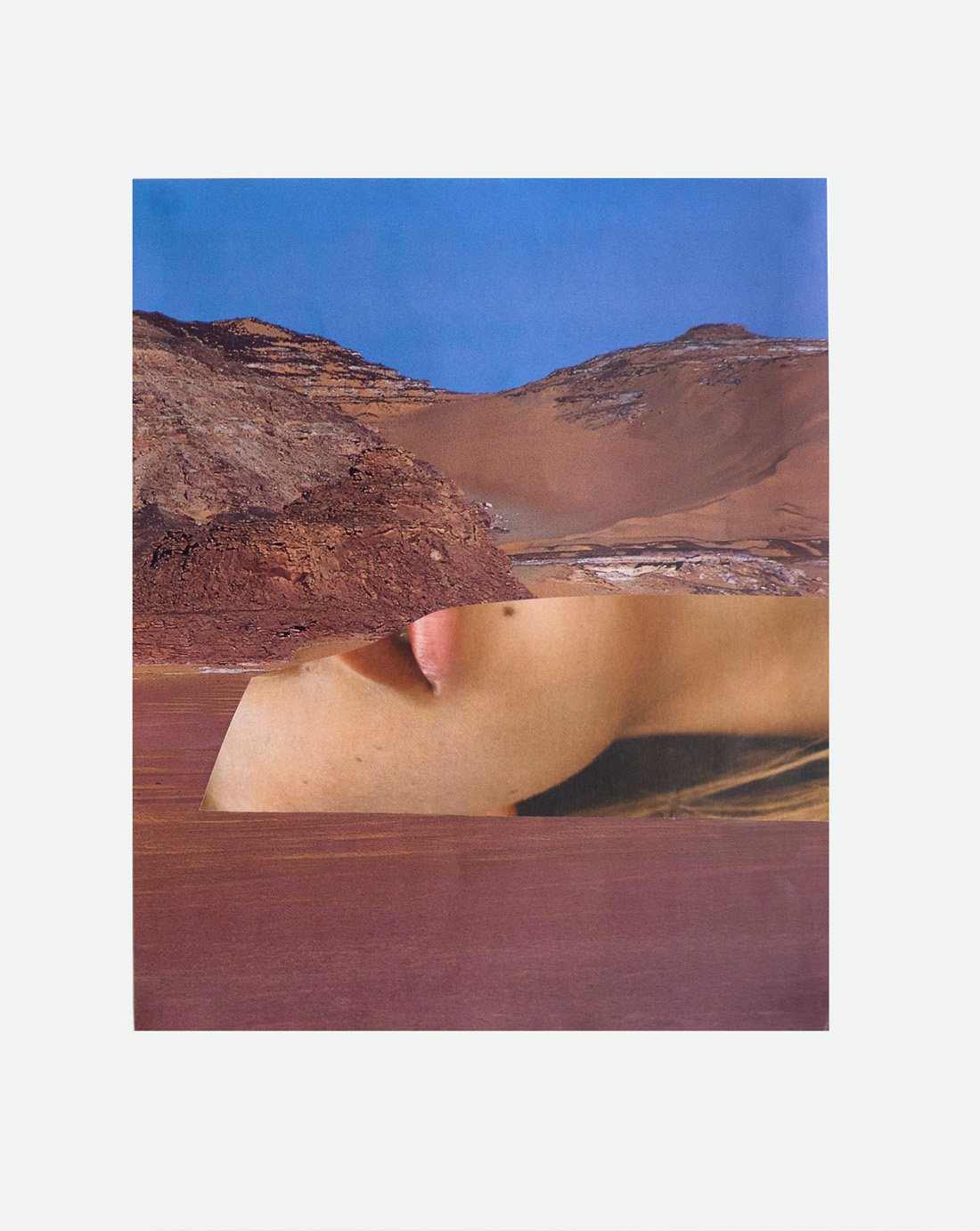
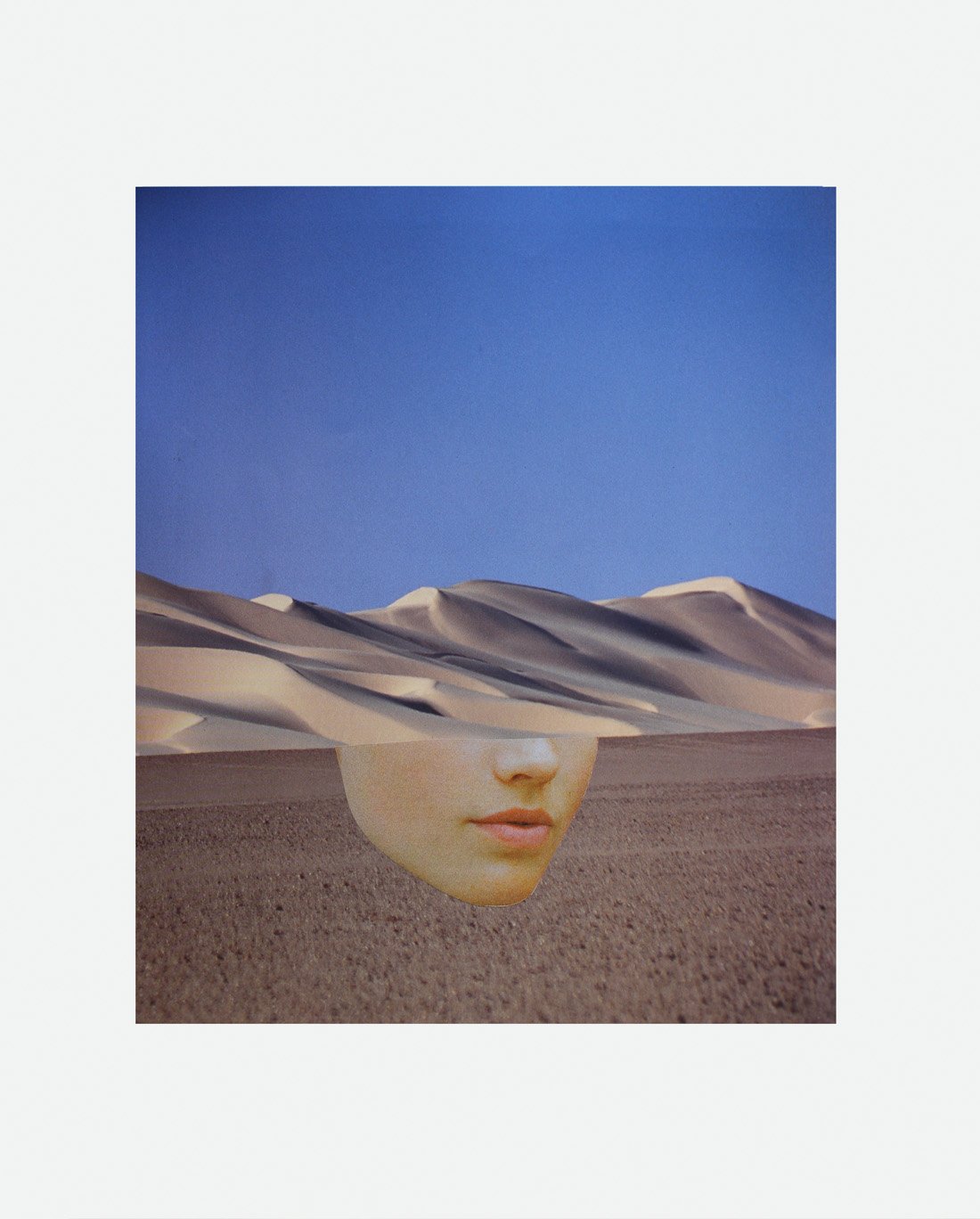
TA: What does your workplace look like?
L: I have a little studio in an artist’s house in Berlin not far from a beautiful lake and surrounded by so much greenery. In the studio I have shelves filled with old books and magazines and boxes where I store piles of images that I ripped out of books for future artworks. I have a plant in my studio which lets me know when I haven’t been there for too long. And while I am working I like to put on music that moves me or brings me in some kind of a flow and my table fills up with images that I ripped or cut out. Order becomes chaos for a while so that I can create a new order with a new meaning.
TA: If you had to create a piece about the plastic waste crisis we are experiencing around the world, how would you represent it?
L: I already created a series of collages that are dealing with the way we are treating our planet and the disastrous effects. The series is called the flood and shows wales swimming in flooded castles. The castles represent our life in abundance, because we really live with so much more than we need, even if our walls are not covered in gold. And in the end we are destroying our own living environment and also the one of other living beings.
TA: Where will we be able to enjoy your work this year?
L: There are several exhibitions planned in Berlin and we might bring one of them to Brooklyn by the end of the year too. My gallery in NYC will most likely also show my work this year. To be informed about my exhibitions I would recommend subscribing to my mailing list on my website and keeping an eye on my Instagram and Facebook profiles.
TA: Where would you like to exhibit your work next?
L: I would love to show my work in Athens or London. I am currently working on a series inspired by ancient Greece and would love to connect to my Greek roots more, also heard that Athens is very interesting at the moment. I haven’t been there for way too long and would love to find out myself. I have recently been in London for a short visit and loved the atmosphere and the creative scene.
